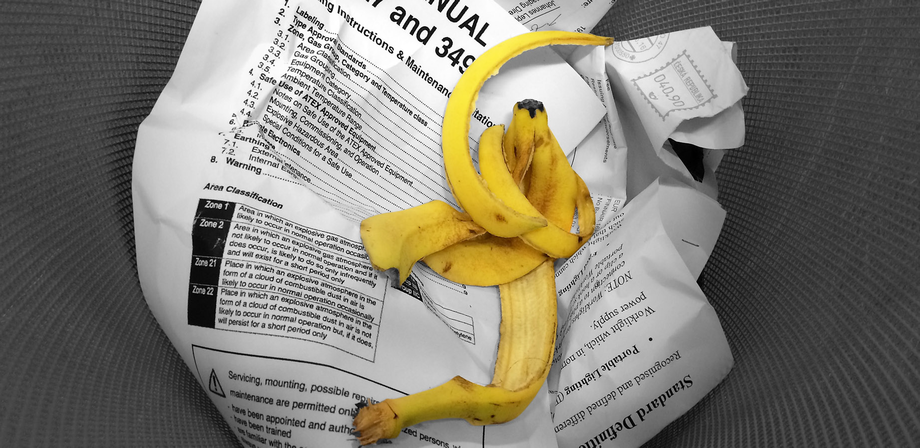Is it a waste of time to read Ex product manuals?
By Tarmo Rintala
We’ve all been there: you get a new ‘toy’ and the first thing you do is throw the package, including the manual, in the trash. Ok, maybe you looked at the manual long enough to get the basic idea of how to install the thing. Beyond that, you, like the rest of us, we tend to rely on common sense to save the day.

What if your new toy is hazardous area equipment? What do you do with the manual? How hard can it be to install, right? A few bolts, brackets, cables and plugs. Simple.
Until Ex equipment comes with artificial intelligence to tell you when you are doing something wrong, you probably should take a closer look at your manuals. There are definitely some risks and pitfalls you need to know about.
Manuals may be abused
Luckily Hazardous Area product manuals are way better than manuals often are. But they can be used as an escape route for equipment manufacturers. Design compromises that make life difficult for the manufacturer are sometimes ‘resolved’ by the manual, handing off the responsibility for that difficult bit to the site owner.
During the certification process, it is possible for the Notified Body to allow a manufacturer to ‘hide’ technical limitations in the manual. For example, there may be limitations on the position or placement for installation that is not obvious (not common sense) just by looking at the product. You have to study the manual to figure that out.
Naturally, at the installation site, the abuse is the worker not taking the time to read the manual – or worse, reading the manual and then ignoring all the do’s and don’t’s.
Some maintenance must be performed by the manufacturer or an authorized repair service.
Otherwise, Ex-certification may be voided.
Demand clarity
As part of the product certification, there may be an X-mark after the certification number. This indicates that there is something special about the product. It could be positive news for the user, but more often it means there are limitations to normal use. However, the X-mark on the certificate, does not necessarily reveal all the challenges!
For instance: how are you supposed to interpret the X-mark with regards to low impact resistance? In practice, it means that the product can withstand impacts up to 4J. High impact resistance must withstand impacts up to 7J. And what does this mean in real life?
If the product is likely to get hit during normal use, should it have high or low impact resistance? Common sense (at least mine) says a product that will get hit regularly requires high impact resistance. Remember also that the product manual should define the limitations of maintenance that can be done ‘do it yourself’ style.

Some maintenance must be performed by the manufacturer or an authorized repair service. Otherwise, Ex-certification may be voided.
Maintain access to manuals
Whether digitally or in a traditional folder on a shelf, it is imperative that you ensure relevant personnel have easy access to Ex product manuals.
The trash bin is really not the correct place for Ex product manuals.
Especially if you have temporary workers coming in who need to use, service or move Ex equipment, give them time to check those manuals. The trash bin is really not the correct place for Ex product manuals.
In addition to basic installation, these manuals typically (or at least should) cover essential guidelines for cleaning and schedule maintenance cycles. If you don’t keep track of these and take appropriate actions, your products can become a major risk to workers in hazardous areas.
If you would like to have more information about the safety features of for explosion hazardous area products, please visit our product pages or contact me directly.

